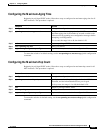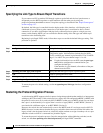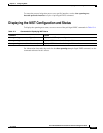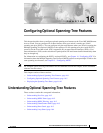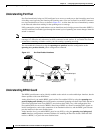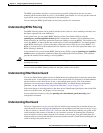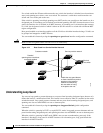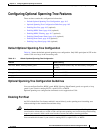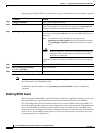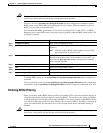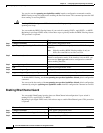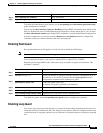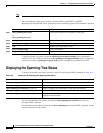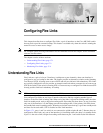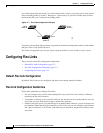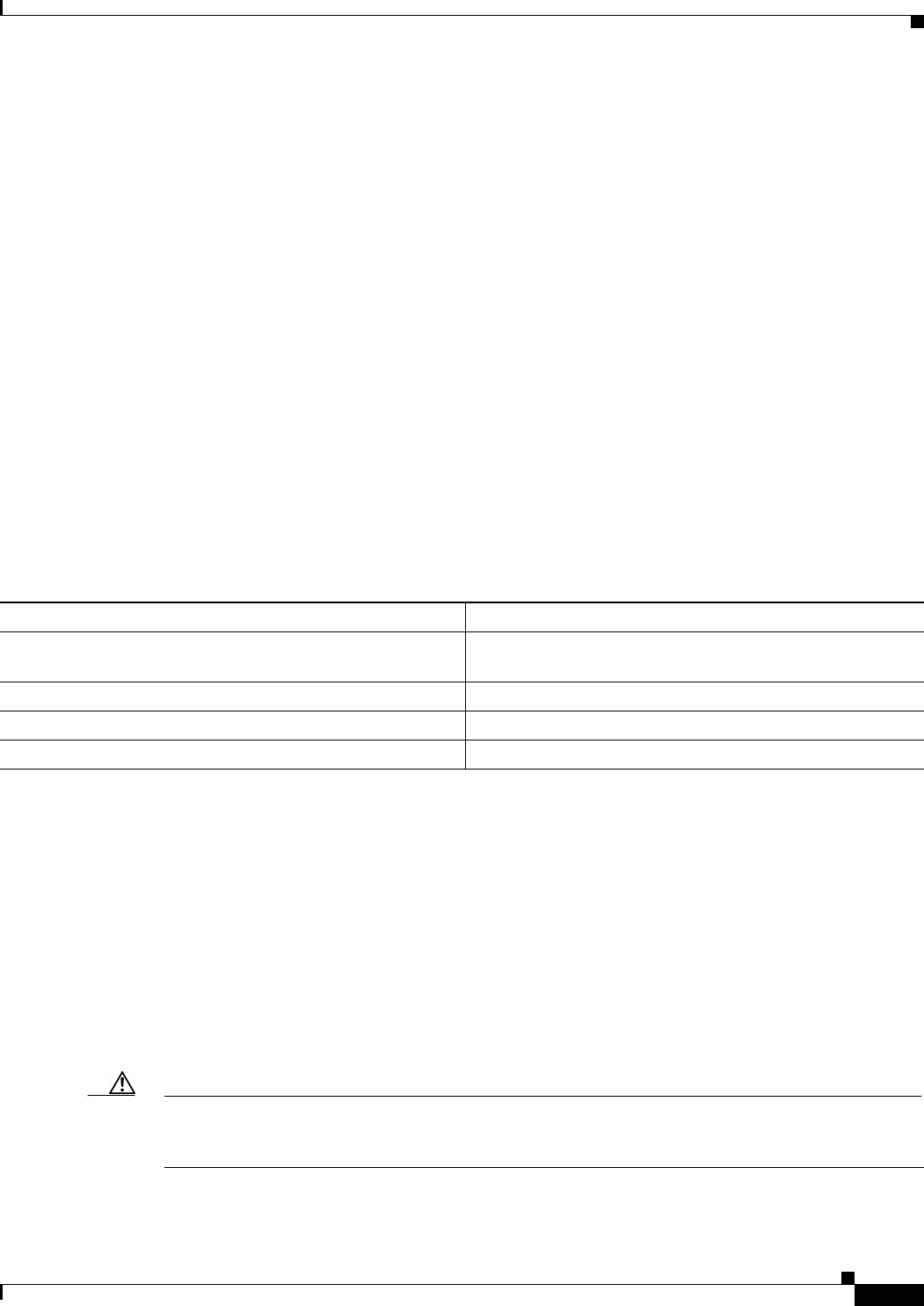
16-5
Cisco ME 3400 Ethernet Access Switch Software Configuration Guide
78-17058-01
Chapter 16 Configuring Optional Spanning-Tree Features
Configuring Optional Spanning-Tree Features
Configuring Optional Spanning-Tree Features
These sections contain this configuration information:
• Default Optional Spanning-Tree Configuration, page 16-5
• Optional Spanning-Tree Configuration Guidelines, page 16-5
• Enabling Port Fast, page 16-5 (optional)
• Enabling BPDU Guard, page 16-6 (optional)
• Enabling BPDU Filtering, page 16-7 (optional)
• Enabling EtherChannel Guard, page 16-8 (optional)
• Enabling Root Guard, page 16-9 (optional)
• Enabling Loop Guard, page 16-9 (optional)
Default Optional Spanning-Tree Configuration
Table 16-1 shows the default optional spanning-tree configuration. Only NNIs participate in STP on the
switch. UNIs are always in the forwarding state.
Optional Spanning-Tree Configuration Guidelines
You can configure PortFast, BPDU guard, BPDU filtering, EtherChannel guard, root guard, or loop
guard if your switch is running PVST+, rapid PVST+, or MSTP.
Optional spanning-tree configuration commands are not supported on UNIs.
Enabling Port Fast
An NNI with the Port Fast feature enabled is moved directly to the spanning-tree forwarding state
without waiting for the standard forward-time delay.
Caution Use Port Fast only when connecting a single end station to an access or trunk port. Enabling this feature
on an interface connected to a switch or hub could prevent spanning tree from detecting and disabling
loops in your network, which could cause broadcast storms and address-learning problems.
You can enable this feature if your switch is running PVST+, rapid PVST+, or MSTP.
Table 16-1 Default Optional Spanning-Tree Configuration
Feature Default Setting
Port Fast, BPDU filtering, BPDU guard Globally disabled (unless they are individually configured
per NNI).
EtherChannel guard Globally enabled.
Root guard Disabled on all NNIs.
Loop guard Disabled on all NNIs.



